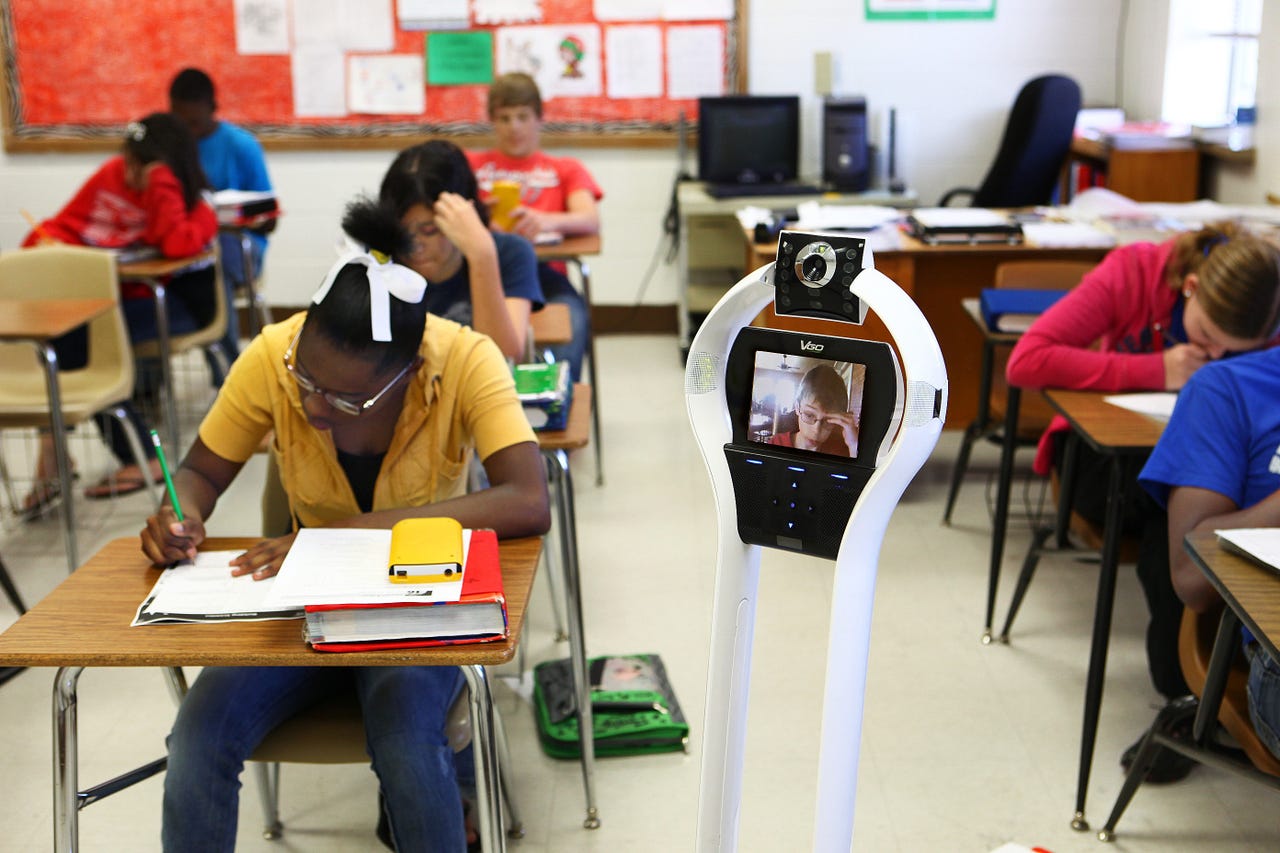Chronically ill kids attend school via telepresence robots


Image: VGo
Mobile robots can help chronically ill children regain part of the normal school experience. Some kids are unable to attend school for months or even years due to symptoms, treatments, or recovery from serious illness. These homebound children typically continue their education by having make-up work sent home and (depending on resources) studying with tutors for a few hours each week. But they miss out on a key aspect of school: socialization.
With today's technology, the definition of face time has changed. Now, students can use live video chats to see and hear what's going on in the classroom, chat with their friends, join in classroom discussions, or even join extracurricular clubs and go on field trips.
Robotics
While it's certainly nice to give kids a chance to actively participate in education, the main benefit of the robots is socialization. Kids who can't attend school often feel isolated and depressed, and this can make them fall behind in both academic and health recovery efforts.
A new study from the University of California at Irvine explores the impact of telepresence robots in classrooms. Although telecommuting to school isn't ideal, the study found that kids felt more socially connected with their peers and more involved academically. In short, they were happier.
When one chronically ill student used a robot to virtually attend class, he suddenly had increased energy and stamina. Previously, he was lethargic and uninterested in school, and his mother assumed his heart condition would prevent him from spending a full day on schoolwork. However, when he started using the robot, he became eager and able to attend school all day.
The robots are pretty basic -- not much more than a tablet mounted on a Segway -- but the effects can be profound. The device includes wheels for moving around and a screen for two-way video, plus cameras, microphones, and speakers. Current models don't have arms, but kids can "raise their hands" to get a teacher's attention by flashing the robot's lights. The best part is they control the robots with a laptop, from the comfort of home.
Just with any connected device, there are the usual security concerns. Veronica Newhart, UCI doctoral student and lead author of the study, tells ZDNet:
Schools are very concerned with security and privacy. The VGo robot and the Double robot are two popular models that are being used in schools and neither robot allows for video recording. Administrators and teachers have expressed appreciation for the inability to record and have stated that they would not allow a robot with the capability to video record in the classroom.
There are, of course, some drawbacks to using robots instead of attending school in real life. On the technical side, there are connectivity issues, imperfect mobility, and limited battery life. On a personal level, it's just a bit... awkward. One student opted out of the program and returned the robot because she didn't like the attention it created. (Kids stared and called her robot a vacuum cleaner.) Another homebound student, Samuel, repeatedly had his view blocked by another kid's hand. And while he was (virtually) eating lunch with his friends, another kid walked up and smeared ketchup on his screen.
Then again, name calling and lunchroom bullies are part of the true school experience. And these experiences can actually help kids bond with their peers. After the ketchup incident, Samuel's friends took turns being his (robot's) bodyguards. When the researchers asked his teacher how she felt about the bullying incident she said, "Well, he's getting the full deal right here. The whole shebang... the good and the bad."